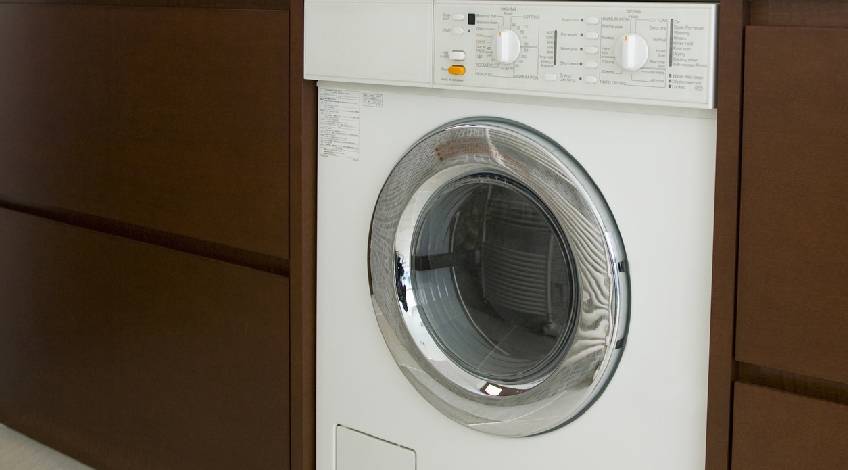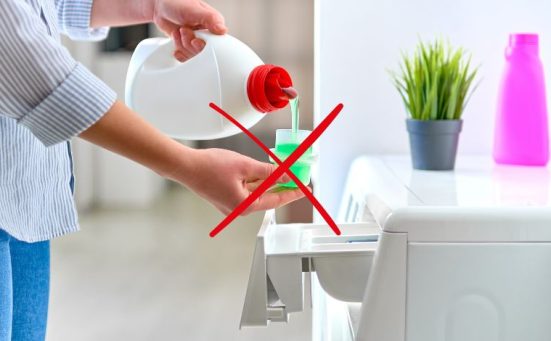
Is Washing Machine Installation Worth Paying For?
If you have to buy a new washing machine you’ve probably had lots of options to choose from. Before you can use your new appliance, there’s another choice to make. That is whether you need to pay for the installation of the new washer or are you going to install it yourself.
Any new appliance isn’t cheap and you probably weren’t prepared for the old one breaking down to the point of no repair. Which means the outlay for a new appliance was unexpected. Adding installation costs to that price can be painful.
So, can you install the new washer yourself? That’s just one of the questions I’ll answer in this article. As well as how much will installation cost? Do you need a plumber to fit a washing machine? And many more, so keep reading.
DIY Or Professional Washing Machine Installation: Which Is Better?

Whether you want to save some money or want to be sure you’re getting the best set up you can, if you’re trying to decide whether to do it yourself or call in the professionals, you need to look at the benefits of each option.
In all honesty there are advantages to both options but how do they compare? And when should you consider one over the other? Let’s take a closer look at the installation of a washing machine to find out more.
Can You Install A Washing Machine Yourself?
Technically, it is possible to install a washing machine on your own. But there are a few things that you’ll need to consider, which are;
It Takes Physical Strength To Install A Washing Machine
Washing machines are heavy beasts and aren’t that easy to manouvre on your own. Incorrect handling could cause injury to your back, arms, legs, etc. If you’re not 100% physically fit, I wouldn’t recommend attempting to install a washing machine on your own.
Another point to remember is that some companies only deliver to the front door of your home and not to the area where the machine will be sited.
You Don’t Want To Damage The Floor
If you happen to have a vinyl or laminate floor in the room where the washer will be put, it’s easy to damage those types of floor coverings when moving a heavy washing machine. Hiring a professional to install the washer would eliminate this worry.
You Need Some Technical Ability (DIY skills)
It’s not always an easy task to remove the old appliance and install the new model. In some cases, the pipes will need replacing, the electricity supply might need upgrading, the drain pipe might need unclogging as well as countless other issues.
If you’re simply replacing like for like, you shouldn’t encounter any problems, but there’s no guarantees. An installer will check the pipes for any leaks, ensure the drain hose is fitted correctly as well as removing the transit bolts.
Disposal Of The Old Appliance
You’ll need to do something with your old washer after disconnecting it and installing its replacement. Many installation services will remove your old appliance for an additional cost.
Which is often far cheaper and less hassle than trying to find someone to take it away at a later date. Or hiring a van and booking an appointment at your local recycling centre (if they’ll take it).
Plus the installation company will also remove all of the packaging from your new appliance. As you can see, there’s quite a lot to consider when thinking about installing a new washing machine.
If this is a first time installation and you’re not a plumber, I would definitely recommend hiring a professional to do the job. However, if this is a case of replacing like for like, and you trust your own abilities, you can install a washing machine by yourself.
How To Install A Freestanding Washing Machine

If you decide to do it yourself you’ll need to check that the new appliance is a similar size to the old one. Check the width, depth and height to ensure it’s going to fit in the same space.
If it’s much larger than your old one, you might encounter difficulty fitting it in the space. If it’s considerably smaller, you could end up with an unusual looking gap around your washer. Once you’re sure it will comfortably fit in the space allocated, you will need the following equipment;
- Spanner
- Screwdriver
- Pliers
- Spirit Level
Method
- Remove All Packaging & Transit Bolts
Carefully remove all of the packaging from the new appliance and using a spanner, remove the transit bolts from the back of the machine. The transit bolts are in place to prevent the drum from moving during transit and need to be removed before the appliance is used to prevent damage. Once the transit bolts have been removed, you can plug the holes with the blanking caps that should have been provided. - Fit The Water Inlet Pipe
Open the door of the washer and remove the water pipe and instruction manual from inside the drum. You then need to screw one end of the water pipe (the thinner of the two hoses) to the lug at the top back of the machine and screw the other end to the lug on the water inlet hose. This can be identified by the blue tap which will be in the off position. Tighten both ends of the inlet hose by hand. Don’t over tighten as this can cause damage to the appliance, the hose and the inlet joint leading to water leaks. - Connect The Drain Hose
The drain hose should already be connected to the new washer and all you need to do is connect the other end. Depending on your setup, the drain hose should be pushed into the standpipe for no more than 15 cm (6 inches) or connected to the spigot under the sink and clamped in place. - Plug The Washer In
Once the inlet hose and drain hose have been connected properly, plug the washer in and push it back into its final position. - Check The Level
Now, using a spirit level, ensure that the washer is level. Check side to side and front to back and adjust the feet accordingly using a pair of pliers. - Run A Short Wash Cycle
You can now run a short cycle and check that there are no leaks or any other problems.
That’s the washing machine installed and ready for use.
How To Install An Integrated Washing Machine

An integrated washing machine is installed in much the same way as a freestanding model. Except it’s more fiddly because of the limited space available to you. Plus you need to install the door as well.
Your new integrated washer will have the relevant instructions on how to fit the door but it’s usually just a case of fixing the hinges in place. If you’ve paid for the delivery company to recycle your old machine, remember to remove the door before they leave.
Always remember the following points when installing an integrated washing machine;
- You may need to dismantle the cupboard around the washer for installation purposes
- The dimensions need to be spot on
- You cannot fit a freestanding washer in an integrated space
- It’s more difficult to spot any leaks etc in an integrated washer
- It’s way more difficult to ensure the appliance is level, but it’s far more important on an integrated washer
- You may need to drill new holes to accommodate pipes etc.
How Much Does It Cost To Install A Washing Machine?
After having read what’s required to install a new washing machine, and you’ve decided it might be a step too far for your level of DIY skills, you might be wondering how much it will cost to hire a professional. You should check with the company you’re ordering the machine from as they often offer the best deals on installation.
All of the larger companies like AO & Curry’s list installation options as part of the checkout process and the cost of installation ranges from around £30 to £120 as long as there’s no extra pipe work or other costs involved.
Installation costs for freestanding washing machines tend to be less than those quoted for integrated washers which are often at the top end of our estimates.
How Much Does It Cost To Have The Old Washing Machine Recycled?

This is another service often offered by the supplier of the new washer and one I recommend you take up. For a charge of around £20 to £30 they will remove your old appliance and take it away with them.
It often costs at least twice as much to get somebody else round to take the old appliance away and you have it sitting in your yard for weeks on end until they can fit you in.
Plus it’s worth remembering that many councils don’t accept old washing machines at their recycling centres even if you were able to get it there yourself.
So, Is It Worth Paying For Washing Machine Installation?
As you can see, if you’re simply replacing like for like, you may be able to install your new washing machine yourself. This could save you anywhere between £30 to £100. However, there could always be unexpected problems which could often cost more to fix and you’d need to find someone to fix the issue and wait for them to become available.
If you’re 100% confident in your DIY skills and fitness levels, it might be worth installing the washer yourself. But if you’re not certain of what you’re doing or it’s a new installation, I would strongly recommend getting a professional to do it for you.
SEE ALSO: Can Washing Machines Set On Fire? (causes, risks & how to stay safe)
Frequently Asked Questions
Unless you are 100% confident in your DIY skills and fitness levels, I would recommend paying for washing machine installation. If anything were to go wrong when installing the washer yourself, it could cost far more than the installation cost to get it repaired.
Washing machine installation costs anywhere between £30 to £120 depending on the make and model of appliance and where it is being installed.
Yes, a plumber should install a washing machine. Due to the amount of water and potential for flooding your home, I would recommend getting your washing machine professionally installed by a qualified plumber.
A professional should have a washing machine installed in less than 1 hour as long as all of the existing pipe work is good.
Also, follow us on Pinterest ...



